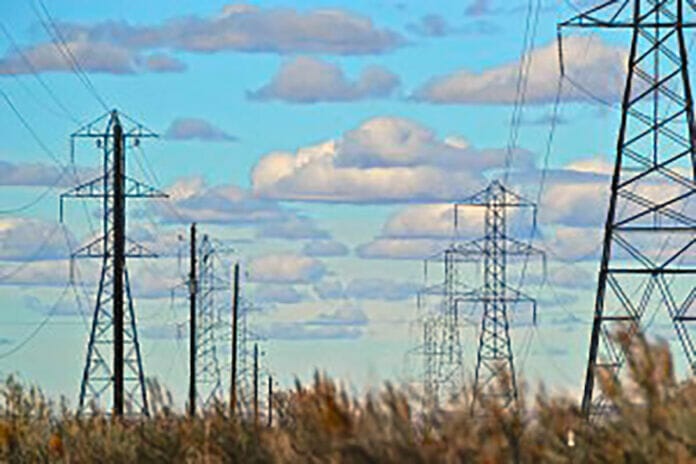
Vyom Mishra, EarthTalk.org
Dear EarthTalk: What on Earth is a “macrogrid” and how do proponents of the concept think it will improve energy efficiency?
—T. McGraw, Houston, TX
The term macrogrid simply refers to a power distribution network that spans many regions and connects smaller producers together to maximize efficiencies of scale. Macrogrids transmitting power produced cheaply in remote rural areas to electricity-hungry users in population centers enhances grid reliability and can save billions in energy costs while creating “green” jobs and helping to reduce carbon emissions.
According to the American Council on Renewable Energy (ACORE), which works to accelerate the transition to a renewable energy economy, looping neighboring electricity suppliers together in a macrogrid increases resilience and threat mitigation, decreases energy supply/demand variability and improves system performance. Five macrogrids are in use now across North America, connecting power lines from coast-to-coast. Texas, Alaska and Quebec each have their own macrogrids, while larger grids cross multiple state/provincial lines.
Despite their cost and environmental efficiencies, macrogrids aren’t always the best choice. When Puerto Rico’s island-wide macrogrid failed in September 2017 due to Hurricane Maria’s 15-20 inches of rain and wind gusts topping 133 miles per hour, power was out across the entire island for weeks on end. Electricity wasn’t fully restored there for 11 months. Meanwhile, a deep freeze across Texas in February 2021 cut off power for some 10 million Texans reliant on that state’s macrogrid.
Some scientists say these kinds climate-change-driven severe weather events don’t help the case for developing ever larger and larger macrogrids, but instead encourage a return to microgrids that, while still able to connect to the larger grid, can also disconnect and operate independently in so-called “island mode” if the overall system is compromised. As such, microgrids can optimize for supplying power locally no matter what’s happening miles and miles away.
Microgrids can also be more efficient depending on their design. Larger macrogrid systems convert the electricity they transmit to alternating current (AC) to go long distances and change direction quickly across hundreds of miles of transmission lines. But there’s an efficiency loss in the conversion from the direct current (DC) of the power source. “Some microgrids are designed to use the direct current power directly from the generation source, which has the potential for an additional seven to 30 percent energy savings,” Jean Redfield, CEO of NextEnergy, tells Microgrid Knowledge. Microgrids utilize alternative methods for receiving energy such as through wind turbines and hydropumps allowing for the direct conversion of power from these sources. In fact, programs to encourage the development of microgrids are already in the works in several states including California, Connecticut, New York and Massachusetts.
But we don’t have to wait for our communities to convert themselves to microgrids to start doing something to save energy. We can all contribute energy conservation by refining our day-to day behaviors, whether by turning off appliances when they aren’t needed or limiting our time in the shower. The future will certainly contain macrogrids and microgrids, but it’s how each and every one of us uses the energy coming in that will determine whether we can conserve our way out of the climate crisis.



